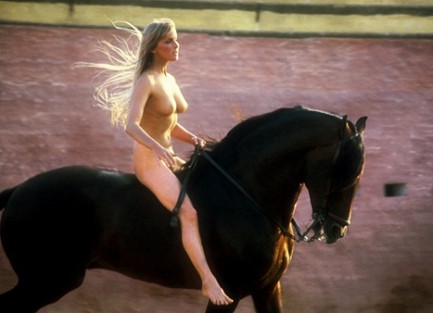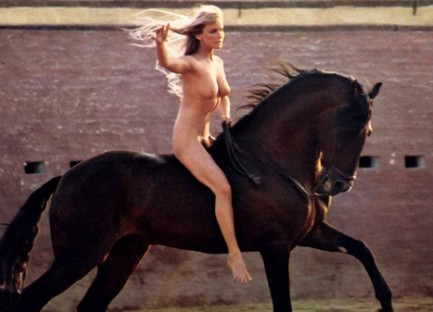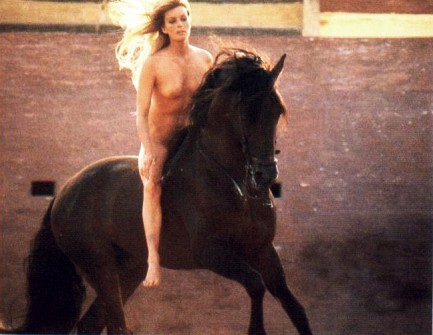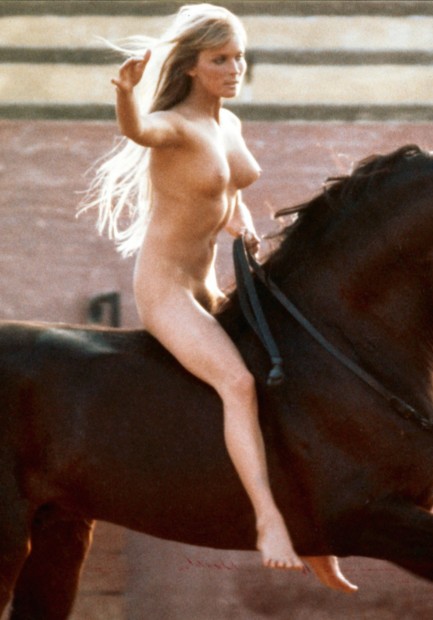 For some men divorce is not a tragedy—it's an opportunity. 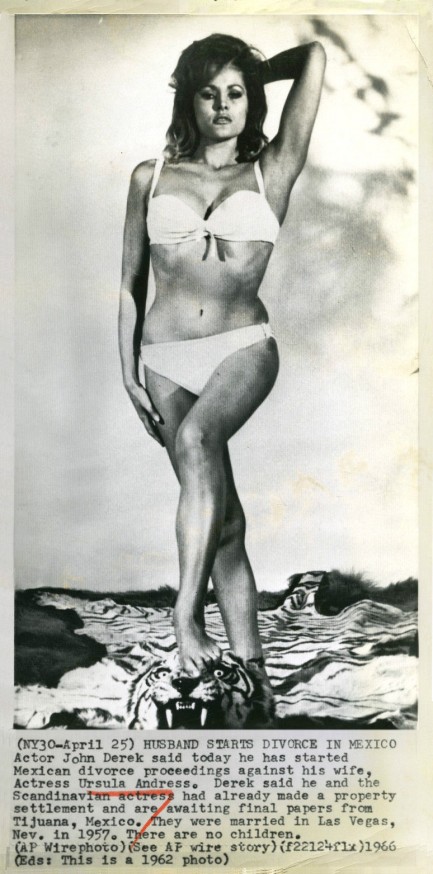
If you've never seen one, this is what an AP wire photo looked like back in 1966. The text at the bottom gives newspaper editors the identity of the subject and some basic facts. No identity needed here—this is Ursula Andress, and the photo is the one widely used when newspapers reported that her husband John Derek was filing for divorce in Tijuana, Mexico. This made us smile because the basic idea here was to show that Derek was out of his mind. Perhaps, however he had already established a pattern of moving on to younger, equally beautiful women. He was first married to Pati Behrs, but divorced her when he met nineteen-year-old Andress. She was thirty when they divorced and he moved on to twenty-three-year-old Linda Evans. And Evans was thirty-two when Derek tossed her over for sixteen-year-old Mary Collins, who you know better as Bo Derek. Andress, Evans, and Collins could have been sisters, and in fact they looked quite a bit like John Derek too (see below). But in Bo he had found not just another doppleganger, but an ingénue willing to star in the poorly made sexually oriented films he liked to direct. These included Fantasies (when Bo was sixteen), the almost competent Bolero, Ghosts Can't Do It, and Tarzan, the Ape Man. Bo and John John Derek stayed together until John died, a span of twenty-two years, so it seems wife number four cured him of his habit of trading for younger models. Just an interesting Hollywood factoid to enliven your Monday.
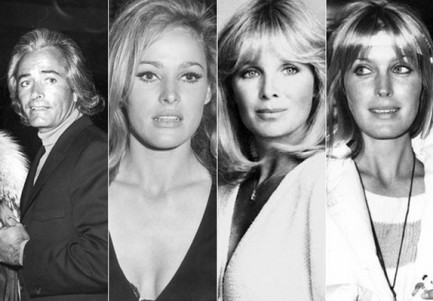
 Neither shall you covet your neighbor’s wife—unless he says it turns him on. 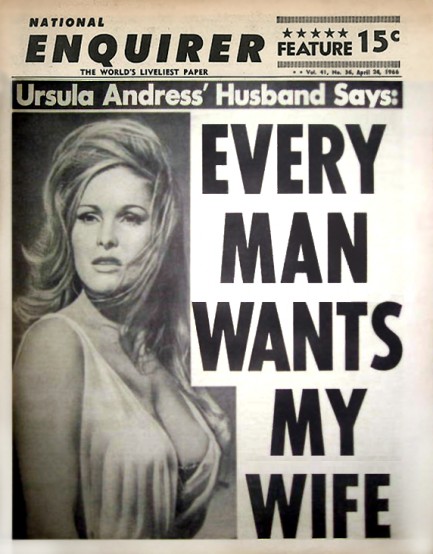
Here’s an interesting National Enquirer cover from today in 1966, with a scrunched Ursula Andress and a quote from her husband John Derek, who never actually had a problem sharing her, or for that matter any of his spouses—at least artistically. He shot and published nude series of second wife Andress, third wife Linda Evans, and fourth wife Bo Derek, and directed Derek in the softcore bomb Bolero, which contained a sex scene that had filmgoers asking at the time if maybe Bo and her partner went beyond mere acting. John Derek is actually worthy of a separate discussion sometime, so maybe we’ll get back to him. He was also eerily consistent—Andress, Evans and Derek are virtually clones of one another. See below. 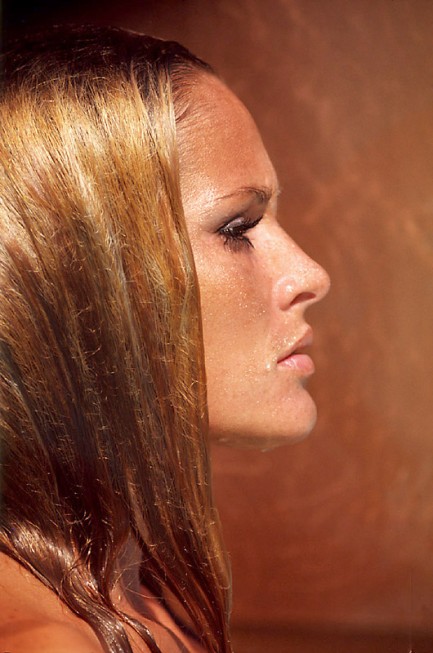 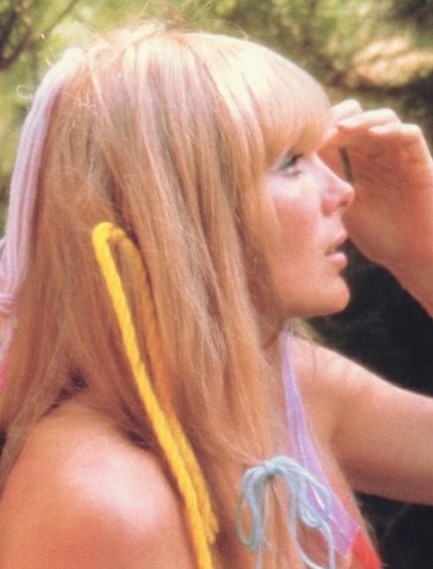 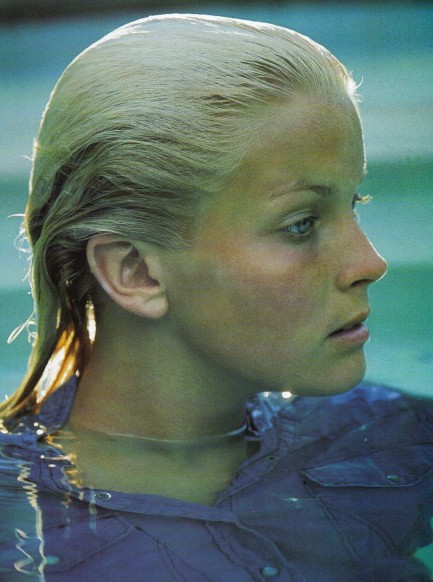
 Who's gonna ride your wild horses? 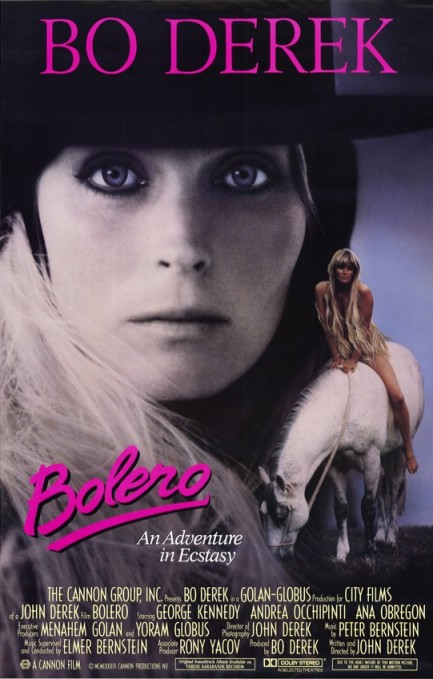 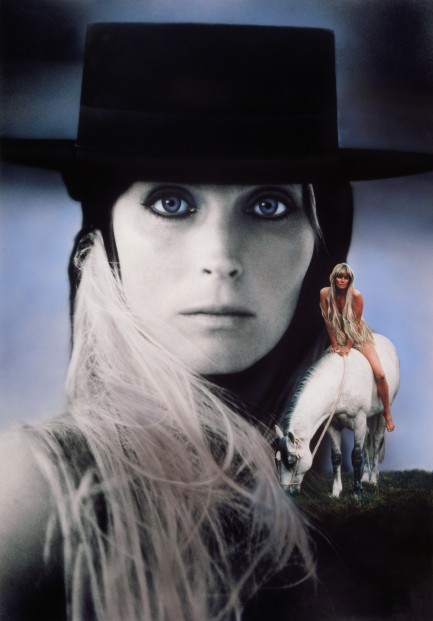
Erotic fiction has always been a major subset of pulp literature, and for a while sex was likewise part of American cinema. Bo Derek personifies sexual nudity on film as much as any actress we can remember. She was originally presented to the world by her Svengali husband John Derek, who had also helped his second and third wives, Ursula Andress and Linda Evans, become stars. The difference was they could act. Bo couldn’t. But Bolero isn’t godawful because Bo acted in it—it’s godawful because John Derek wrote it. Yet for all its flaws, Bolero is a landmark because it’s one of the last full-blown, joyful, erotic American films. From this point forward, nudity in American cinema seemed to consist of either breast-flashing slapstick, or result in severely negative consequences. Cinema sex as an expression of simple joy still existed, but actual nudity was becoming more and more political. Was it AIDS that did this? Was it simply an overdue cultural shift? We can’t say. Fast forward to 2009 and we have American directors shooting clothed sex scenes, then explaining—as if every other director in town hadn't also shot a clothed sex scene—that not showing skin is much sexier than having actors parading around naked. We disagree, and the stills below prove our point, but we understand that times change. Bolero makes clear just how much. It was one of the worst films of that or any year, but it made sex a celebration. It premiered in the U.S. today in 1984.
 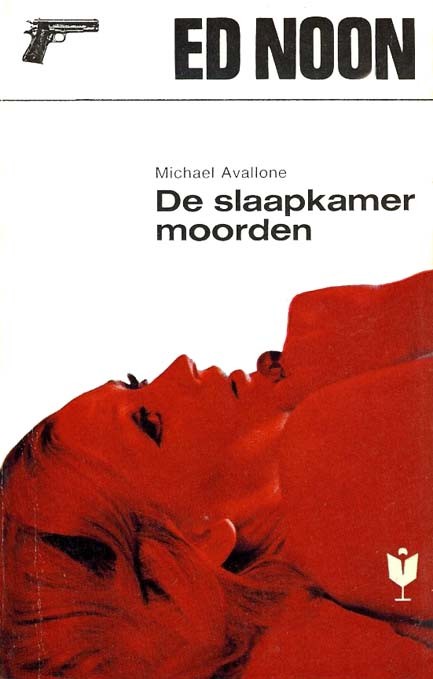 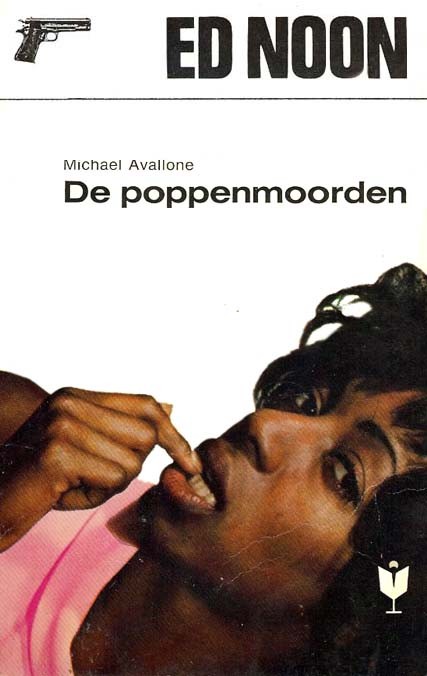
Dutch covers for two of Michael Avallone’s Ed Noon thrillers. These are The February Doll Murders, from 1966, and The Bedroom Bolero, from 1963. Avallone died this month in 1999.
|
 |

The headlines that mattered yesteryear.
2003—Hope Dies
Film legend Bob Hope dies of pneumonia two months after celebrating his 100th birthday. 1945—Churchill Given the Sack
In spite of admiring Winston Churchill as a great wartime leader, Britons elect
Clement Attlee the nation's new prime minister in a sweeping victory for the Labour Party over the Conservatives. 1952—Evita Peron Dies
Eva Duarte de Peron, aka Evita, wife of the president of the Argentine Republic, dies from cancer at age 33. Evita had brought the working classes into a position of political power never witnessed before, but was hated by the nation's powerful military class. She is lain to rest in Milan, Italy in a secret grave under a nun's name, but is eventually returned to Argentina for reburial beside her husband in 1974. 1943—Mussolini Calls It Quits
Italian dictator Benito Mussolini steps down as head of the armed forces and the government. It soon becomes clear that Il Duce did not relinquish power voluntarily, but was forced to resign after former Fascist colleagues turned against him. He is later installed by Germany as leader of the Italian Social Republic in the north of the country, but is killed by partisans in 1945.
|

|
|

It's easy. We have an uploader that makes it a snap. Use it to submit your art, text, header, and subhead. Your post can be funny, serious, or anything in between, as long as it's vintage pulp. You'll get a byline and experience the fleeting pride of free authorship. We'll edit your post for typos, but the rest is up to you. Click here to give us your best shot.

|
|











